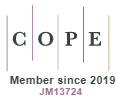Student's perception of effectiveness of a technology enhanced problem based learning environment in a Mechanical Engineering module
DOI:
https://doi.org/10.15415/jotitt.2016.41002Keywords:
Problem based learning, education technology, instruction designAbstract
The main aim of this research is to improve the use of education technology inproblem based learning (PBL) environment in a Mechanical Engineering (ME) module. The research study adoptedthe quantitative and qualitative methods. The study sample comprised of 79 students from Edinburgh Napier University (ENU), Scotland. Thedata gathering instrument comprised of two quantitative and one qualitative student’s feedback questionnaires. The results shows that education technology integration into the PBL environment according to the students learning needs,toprovide students with an opportunities to collaborate and build new knowledge in a PBL environment. Finally, the study proposed an improved design of the learning task. It implies the need for the teaching institution to provide academic staff development to support tutors in carrying out PBL and to encourage the use of tools like 3E-Framework that help academic staff to meaningfully incorporate technology into learning and teaching.
Downloads
References
[2] Donnelly, R. (2005). Using Technology to Support Project and Problem-based Learning, 157– 177.
[3] Gallagher, S. A., & Gallagher, J. J. (2013). Using Problem-based Learning to Explore Unseen Academic Potential. Interdisciplinary Journal of Problem-Based Learning, 7(1), 3–15. Retrieved from http://docs.lib.purdue.edu/ijpbl/vol7/iss1/9/ http://dx.doi.org/10.7771/1541-5015.1322
[4] Gupta, S.C., Kapoor, V.K. (2007). Fundamentals of Applied Statistics. Sultan Chand & Sons.
[5] Hair, J.F., Black, W.C., Babin, B.J., and Anderson, R. E., Hair, J.F., Black, W.C., Babin, B.J., and Anderson, R. E. (2009). Multivariate Data Analysis - A Global Perspective. New Jersey: Pearson Education Inc.
[6] Huxham, M. (2007). Fast and effective feedback: are model answers the answer? Assessment & Evaluation in Higher Education, 32(6), 601–611. http://dx.doi.org/10.1080/02602930601116946
[7] Jolly, J., & Jacob, C. (2012). A study of problem-based learning approach for undergraduate students. Asian Social Science, 8(15), 157–164. http://dx.doi.org/10.5539/ass.v8n15p157
[8] Jonassen, D. H., & Hung, W. (2008). All Problems are Not Equal: Implications for Problem- Based Learning. Interdisciplinary Journal of Problem-Based Learning.http://dx.doi.org/ 10.7771/1541-5015.1080
[9] Kennedy, G. E., Judd, T. S., Churchward, A., Gray, K., & Krause, K. L. (2008). First-year students’ experiences with technology: Are they really digital natives? Australasian Journal of Educational Technology, 24(1), 108–122.
[10] Laurillard, D. (2002). RETHINKING UNIVERSITY TEACHING. RoutledgeFalmer.
[11] Oliver, R., Herrington, J., Reeves, T.C. (2006). Creating Authentic Learning Environments Through Blended Learning Approaches. In THE HANDBOOK OF BLENDED LEARNING (pp. 502–515). Pfeiffer.
[12] Robertson, I. (2008). Learners’ attitudes to wiki technology in problem-based, blended learning for vocational teacher education. Australasian Journal of Educational Technology, 24(4), 425–441.
[13] Savery, J. R. (2006). Overview of Problem-based Learning: Definitions and Distinctions. Interdisciplinary Journal of Problem-Based Learning, 1, 13. Retrieved from http://dx.doi. org/10.7771/1541-5015.1002
[14] Savery, J. R., & Duffy, T. M. (1995). Problem-based learning: An instructional model and its constructivist framework. Educational Technology, 35(16), 31–38. doi:47405-1006
[15] Schon, D.A., 1983. The reflective practitioner-how professionals think in action, USA: Basic Books, Inc.
[16] Scoles, J., Huxham, M., & McArthur, J. (2012). No longer exempt from good practice: using exemplars to close the feedback gap for exams. Assessment & Evaluation in Higher Education, (March 2015), 1–15. http://dx.doi.org/10.1080/02602938.2012.674485
[17] Smyth, K., Bruce, S., Fotheringham, J., & Mainka, C. (2011). Benchmark for the use of technology in modules designed and developed by Benchmark for the use of technology in modules.
[18] So, H., & Kim, B. (2009). Learning about problem-based learning: Student teachers integrating technology, pedagogy and content knowledge. Australasian Journal of Educational Technology, 25, 101–116. http://dx.doi.org/10.1080/13502930802689012
[19] Solvie, P., & Kloek, M. (2007). Using technology tools to engage students with multiple learning styles in a constructivist learning environment. Contemporary Issues in Technology and Teacher Education, 7(2), 7–27.
[20] Tambouris, E., Panopoulou, E., Tarabanis, K., Ryberg, T., Buus, L., Peristeras, V., … Porwol, L. (2012). Enabling Problem Based Learning through Web 2. 0 Technologies: PBL 2. 0. Educational Technology & Society, 15, 238–251. http://dx.doi.org/10.1016/j.nedt.2014.10.006
[21] Tee, M. Y., & Lee, S. S. (2011). From socialisation to internalisation: Cultivating technological pedagogical content knowledge through problem-based learning. Australasian Journal of Educational Technology, 27(1), 89–104.
[22] Wiznia, D., Korom, R., Marzuk, P., Safdieh, J., & Grafstein, B. (2012). PBL 2.0: Enhancing problem-based learning through increased student participation. Medical Education Online, 17(1).http://dx.doi.org/10.3402/meo.v17i0.17375
[23] Woods, D.R. (1996). Instructor’s Guide for “Problem-based Learning: how to gain the most from PBL.
Downloads
Published
How to Cite
Issue
Section
License
Articles in Journal on Today's Ideas - Tomorrow's Technologies (J. Today’s Ideas - Tomorrow’s Technol.) by Chitkara University Publications are Open Access articles that are published with licensed under a Creative Commons Attribution- CC-BY 4.0 International License. Based on a work at https://jotitt.chitkara.edu.in. This license permits one to use, remix, tweak and reproduction in any medium, even commercially provided one give credit for the original creation.
View Legal Code of the above mentioned license, https://creativecommons.org/licenses/by/4.0/legalcode
View Licence Deed here https://creativecommons.org/licenses/by/4.0/
 |
Journal on Today's Ideas - Tomorrow's Technologies by Chitkara University Publications is licensed under a Creative Commons Attribution 4.0 International License. Based on a work at https://jotitt.chitkara.edu.in |











